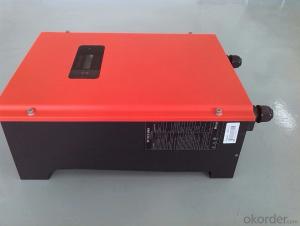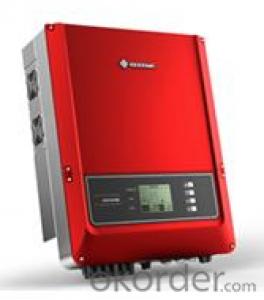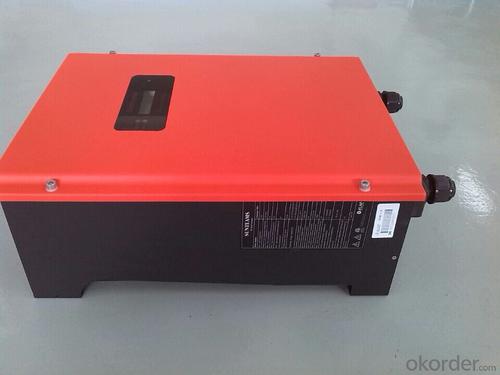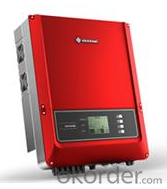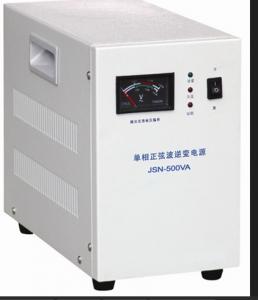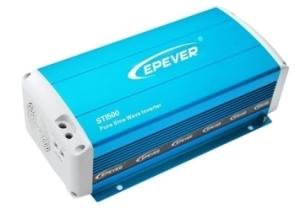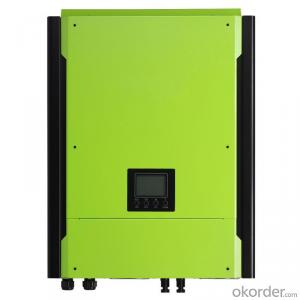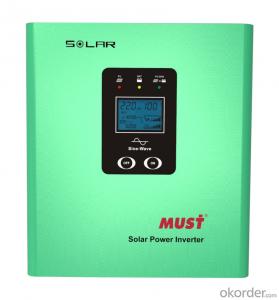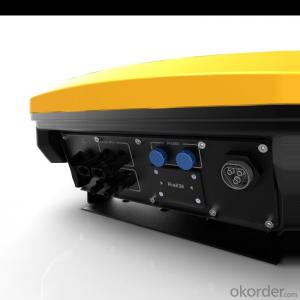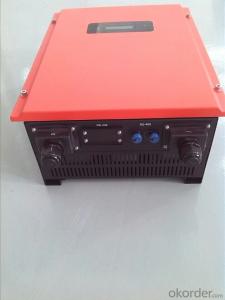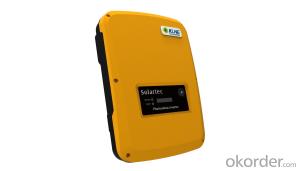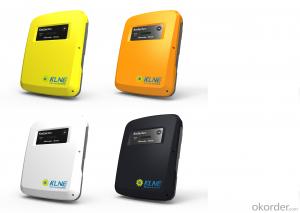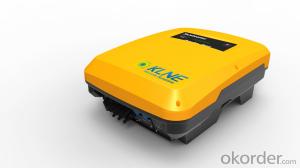Solar Inverter Plus Battery - Off-Grid Type Solo-600 Series
- Loading Port:
- Shanghai
- Payment Terms:
- TT OR LC
- Min Order Qty:
- 10 unit
- Supply Capability:
- 1000 unit/month
OKorder Service Pledge
OKorder Financial Service
You Might Also Like
Product Description:
This system can keep 5 energy-saving bulbs with 15W working for 5 hours per day and a 5W radio working for 8 hours a day. The AC load can keep a 28in color TV (70W) working for 5 hours, a 70W phonograph record machine working for 5 hours, and a fan less than 60W running for 5 hours.
It can work for 3 successive rainy days.
Powered by DC current
Can used out of doors
High effiency and low noise
FAQ
What is your payment terms?
We accept T/T payment, normally we need 20% T/T in advance, 80% payed before shipment.
What is your packing system?
We put the sistem in the wooden box.
Can you do OEM service?
Yes we can, but we need to do it with a certain order quantity.
● System voltage:24V
Ø ● Output:220VAC/50Hz
Ø ● Power:600VA Product Datasheet: Main accessories Specifications No. Notes Inverter Solo-600 1 Standard PV modules Polysilicon 100Wp 6 pieces Optional Storage battery Lead acid, maintenance-free,12V/200Ah 4 pieces Optional Controller Solo-VS24V/30A 1 unit Optional PV accessories shelf Simple type 1 set Optiona
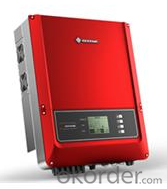
Product Advantages:
- Q: Can a solar inverter be used with battery storage?
- Yes, a solar inverter can be used with battery storage. In fact, it is commonly used in solar energy systems to convert the direct current (DC) power generated by solar panels into alternating current (AC) power that can be used by household appliances or stored in batteries for later use. The solar inverter plays a crucial role in managing the flow of electricity between the solar panels, batteries, and the electrical grid, ensuring efficient energy utilization and storage.
- Q: Can a solar inverter be used in areas with high levels of electrical noise or interference?
- Yes, a solar inverter can be used in areas with high levels of electrical noise or interference. However, it is important to ensure that the solar inverter is designed and equipped to handle such conditions. Some modern solar inverters have built-in features and technologies that help mitigate electrical noise and interference. These features may include advanced filtering, shielding, and surge protection mechanisms. Additionally, proper grounding and installation practices can also help reduce the impact of electrical noise and interference on the performance of the solar inverter. It is advisable to consult with a professional or the manufacturer of the solar inverter to ensure compatibility and optimal performance in high-noise environments.
- Q: Can a solar inverter be used in areas with high levels of electromagnetic interference (EMI)?
- Yes, a solar inverter can be used in areas with high levels of electromagnetic interference (EMI) as long as the inverter is designed and tested to withstand such conditions. Inverters with robust shielding and advanced filtering mechanisms can effectively mitigate the effects of EMI, ensuring stable and reliable operation even in challenging electromagnetic environments.
- Q: How does a solar inverter affect the overall aesthetics of a solar installation?
- A solar inverter does not have a significant impact on the overall aesthetics of a solar installation. Inverters are typically mounted in discreet locations, such as on the side of a building or inside a garage, where they are not visible from the street or prominent areas. Therefore, the inverter's presence does not greatly affect the visual appeal of the solar system.
- Q: Can a solar inverter be used with different tracking algorithms?
- Yes, a solar inverter can be used with different tracking algorithms. Inverters are designed to convert the DC power generated by solar panels into AC power for use in homes and businesses. They typically have the ability to integrate with various tracking algorithms that optimize solar panel performance by adjusting their position and angle according to the sun's movement. This flexibility allows for increased energy production and efficiency based on the specific tracking algorithm used.
- Q: Can a solar inverter be used with building-integrated photovoltaic systems?
- Yes, a solar inverter can be used with building-integrated photovoltaic (BIPV) systems. Solar inverters are an essential component of any photovoltaic system, including BIPV systems. They are responsible for converting the direct current (DC) generated by the solar panels into alternating current (AC) that can be used to power electrical devices in buildings. Therefore, a solar inverter is necessary to ensure the seamless integration of BIPV systems with the electrical grid and the effective utilization of solar energy.
- Q: Can a solar inverter be used with a solar air conditioning system?
- Yes, a solar inverter can be used with a solar air conditioning system. A solar inverter is responsible for converting the direct current (DC) electricity produced by solar panels into alternating current (AC) electricity that can be used to power household appliances, including air conditioning systems. By connecting a solar inverter to a solar air conditioning system, the energy generated by the solar panels can be efficiently utilized to cool the environment. This not only maximizes the use of renewable energy but also helps in reducing electricity costs and minimizing the carbon footprint.
- Q: What are the signs of a faulty solar inverter?
- Some signs of a faulty solar inverter include a complete lack of power generation, inconsistent or fluctuating power output, error messages or fault codes displayed on the inverter, unusual or excessive noise coming from the inverter, and visual indicators such as flickering lights or abnormal behavior of connected devices.
- Q: What are the potential risks of overvoltage in a solar inverter?
- The potential risks of overvoltage in a solar inverter include damaging the inverter itself, reducing its lifespan, and potentially causing a fire or electrical hazard. Overvoltage can also lead to the failure of other connected components, such as solar panels or batteries, and may even result in a complete system shutdown. It is crucial to implement protective measures, such as surge protectors or voltage regulators, to mitigate the risks associated with overvoltage.
- Q: What is the role of a solar inverter in a grid-tied system?
- The role of a solar inverter in a grid-tied system is to convert the direct current (DC) electricity generated by the solar panels into alternating current (AC) electricity that is compatible with the electrical grid. It also ensures the synchronization and stability of the solar power system with the grid, allowing excess energy to be fed back into the grid and enabling the system to draw power from the grid when needed.
Send your message to us
Solar Inverter Plus Battery - Off-Grid Type Solo-600 Series
- Loading Port:
- Shanghai
- Payment Terms:
- TT OR LC
- Min Order Qty:
- 10 unit
- Supply Capability:
- 1000 unit/month
OKorder Service Pledge
OKorder Financial Service
Similar products
Hot products
Hot Searches
Related keywords
